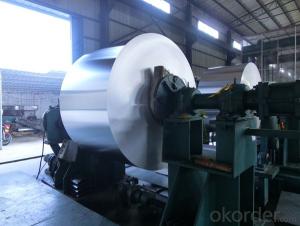Used Solar Inverter
Used Solar Inverter Related Searches
Deer Sculptures For Garden Garden Summerhouse With Storage Steel Outdoor Bench Outdoor Light Projector Stars F250 Light Bar Behind Grille Iron Outdoor Bench Iron Table Lamps Outdoor House Spotlights Plastic Patio Sets Clearance Double Hanging Egg ChairHot Searches
Type Of Inverter For Solar Types Of Inverter For Solar Used Solar Inverter For Sale Inverter Size For Solar System Solar Edge Inverter For Sale 5kw Solar Inverter For Sale Solar Inverter For Sale Solar Inverter For Battery Solar Inverter For Split Ac Solar Inverter For Laptop Solar Inverter For Fridge Solar With Inverter Price Solar Inverter With 2 Battery Solar Inverter Price In China Best Solar Inverter In China Solar Inverter Price In Dubai Solar Inverter Price In Uae Solar Inverter Price In Kenya Solar Inverter Price In Kerala Solar Hot Water Collectors For SaleUsed Solar Inverter Supplier & Manufacturer from China
Okorder.com is a professional Used Solar Inverter supplier & manufacturer, offers integrated one-stop services including real-time quoting and online cargo tracking. We are funded by CNBM Group, a Fortune 500 enterprise and the largest Used Solar Inverter firm in China.Hot Products
FAQ
- Yes, a solar inverter can be used with a ground-mounted solar array. A solar inverter is responsible for converting the DC (direct current) electricity produced by the solar panels into AC (alternating current) electricity that can be used to power homes or businesses. Whether the solar array is ground-mounted or roof-mounted, the solar inverter plays a crucial role in converting the electricity for use in the desired location.
- Yes, a solar inverter can be connected to a smart home or monitoring system. This integration allows for real-time monitoring, remote control, and data analysis of the solar energy production and consumption within a smart home or monitoring system.
- The role of a maximum power point tracker (MPPT) in a solar inverter is to constantly monitor and adjust the output voltage and current from the solar panels to ensure they are operating at their maximum power point. By tracking and maintaining this optimal operating point, the MPPT increases the overall energy efficiency and power output of the solar system. This is particularly important as solar panel performance can be affected by various factors such as shading, temperature, and varying sunlight intensity.
- Yes, a solar inverter can be used with a smart home system. Smart home systems are designed to integrate with various devices and technologies, including solar inverters. By connecting a solar inverter to a smart home system, users can monitor and control their solar energy production, track energy consumption, and optimize energy usage based on real-time data. This integration allows for increased energy efficiency and convenience in managing solar power within a smart home environment.
- A grid-tied solar inverter functions by converting the direct current (DC) produced by solar panels into usable alternating current (AC) that can be fed into the electrical grid. This inverter synchronizes the frequency and voltage of the generated electricity with that of the grid, allowing for seamless integration and distribution of solar power to homes and businesses. Additionally, it continuously monitors the grid voltage and shuts down in the event of a power outage to ensure safety and prevent back-feeding.
- Yes, a solar inverter can be used with a solar-powered EV charging network. A solar inverter is responsible for converting the direct current (DC) produced by solar panels into alternating current (AC) that can be used to power electrical devices, including EV chargers. By integrating a solar inverter into a solar-powered EV charging network, the energy generated by the solar panels can directly power the charging stations, reducing reliance on the grid and promoting sustainable energy use.
- A solar inverter handles grid disturbances such as voltage sags, swells, and flickers by constantly monitoring the grid's voltage and frequency. When a disturbance occurs, the inverter utilizes its internal control mechanisms to adjust the solar power output accordingly. It can compensate for voltage sags by injecting additional power into the grid, and it can reduce power output during voltage swells to prevent overloading. Additionally, the inverter's control algorithms help minimize flickering by maintaining a stable and consistent power supply to the grid.
- Yes, solar inverters are compatible with smart home systems. Many modern solar inverters come with built-in communication capabilities, such as Wi-Fi or Ethernet connectivity, which allow them to integrate seamlessly with smart home systems. This enables homeowners to monitor and control their solar energy production, consumption, and storage through their smart home devices or applications.














































